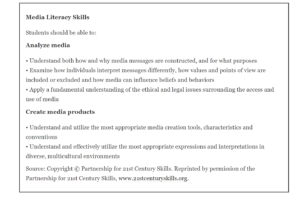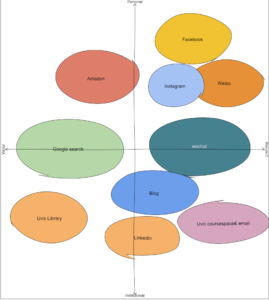- Identify the risks and benefits of engaging with a public audience in a media space – what are the risks for a public figure or person in a position of trust (educator, lawyer, government official)?
Celebrities and politicians make the greatest use of social media to expand their personal influence and enhance their personal characteristics. Their role-playing on social media is equivalent to their own brand and reputation. There are millions of fans for celebrities. In terms of wealth, online role-playing has become an integral part of self-branding (van Dijck, J., 2013). For a public figure in a position of trust, such things as identity, status, and social reputation are an appropriate mode of behavior with inherent consistency, which are constantly being modified and polished and have strong coherence. It must show and describe something, and make people perceive these things (Goffman, 2008). The election of Brazil’s President Bolsonaro is a typical example. He has been imitating Trump’s tone and style, and successfully used “Facebook” to bypass the mainstream media for election purposes. The report from the communications consulting firm Madison State (BCW) showed that Bolsonaro had more than 145 million interactions on “Facebook” with users, and on average, each post has more than 100,000 interactions . After recovering from an attempted assassination attempt in September 2018, Bolsonaro conducted a 20-minute moving live broadcast to the public on his hospital bed and accused that the opponents of the Labour Party had election fraud. This live post has been viewed more than 8 million times. His proficient use of social media played a crucial role in his election. As Sophie said, social media kept you relevant in the public eye.
However, there are potential risks of engaging with a public audience in a media space especially for a pubic figure or person in a position of trust such as educator, laywer and government official. Privacy is one of the biggest risks since many users put attention on public figure’s private life. Both fans and opponents try to track their daily activities and even their home addresses from each of their posts.If you choose to use social media as a platform for expressing opinions, even if your thoughts and opinions are widespread, it may still arouse the dissatisfaction of countless people. For example, you support a certain point of view and post your personal opinion onTwitter, but you don’t know whom you make unhappy to take violent actions against you, especially if you are a celebrity with hundreds of thousands or even millions of fans. The risk is even higher. Another risk is “cancel culture”. Cancel culture” refers to a type of boycott, especially one initiated online. It is common on social media that someone (usually a well-known person) or a (well-known) company has said or done something that is offensive or unacceptable, and then they were boycotted by various public opinions (Shabazz, 2020). Their job opportunities, commercial endorsements, corporate sponsorship, and even their online influence were “all cancelled”. For example, the author of “Harry Potter”, J.K. Rowling has been widely criticized and resisted because of her unappropriate remarks against regarding transgender people as a “real” woman on Twitter. “Cancel culture” has reduced the freedom of expression of personal opinion, and the tolerance for diversities has also decreased. Many people worry that if you accidentally say the wrong thing, your life’s destiny may change forever. Cancel culture wrongly empowers people to judge others and makes people forget who did one thing wrong is not heinous (Rosenberg, 2020). Social media can indeed promote positive changes in society, but it must not lose the environment for public debate because of cultural cancel.
- Negative replies and career development
From the perspective of career development , I will not pay too much attention to negative responses to a certain point of view. The overall trend of social media is inclusiveness and openness. We need to allow the public to express opposite opinions. Accepting and absorbing negative reviews also helps to establish a corporate or personal image. For companies, the maximum spread of negative comments appears within 1 to 2 hours after the original post appears. Therefore, after monitoring consumer’s comments, companies should grasp this point in time and respond in a timely manner. The content of the response should be as sincere and humane as possible, and the online response should be combined with offline communication to solve the problem to the greatest extent. A typical negative is D&G. On November 17, 2018, the well-known Italian clothing brand D&G released a promotional video. The content in the promotional video involved the combination of Italian and Chinese traditional culture, but the posture of the actors using chopsticks, tone of the narration, eating pizza with chopsticks and other clips have caused many netizens to question its discrimination against traditional Chinese culture. After this promotional film, chinese social platforms immediately set off a wave of public opinion. On the same day, D&G’s official Weibo account quickly deleted the video, but it still existed on other networks such as Instagram and Facebook. This inconsistent practice has further aggravated the dissatisfaction and condemnation of the Chinese users. D&G undoubtedly encountered a very serious public relations crisis. However, in the face of the crisis, D&G’s response was negative, and its chief designer even rudely responded to netizens on private social account, and publicly issued insulting comments to China. After the screenshots were exposed, he denied it under the pretext of “account stolen”. Many days later, D&G officials finally released an apology video, but it was too late. Many days later, D&G officially finally released an apology video, but it was too late. They totally lost their Chinese market.
- Delivering information in a connected society requires verifiable resources, how does one build a PLN that can be consistently relied on?
Acoording to Hirst (2019), more and more fake news are posted on social media with varies purposes such as influencing election. Finding reliable sources of information and checking whether the information is true are important means to maintain account credibility. The appearance of one fake information will make this account unreliable any more, so when posting information, a PLN should insist on using verified legitimate news sources. Meanwhile, due to the existence of software such as Photoshop that can easily modify and distort the original appearance of a picture, thus freely manipulating your historical memory, the picture becomes no longer reliable. In order to prevent being deceived, it is necessary to investigate multiple sources of information, and do not trust the so-called evidence easily. Finally, we will benefit from continuous learning and curiosity. People with strong curiosity evaluate scientific evidence in a more balanced way without generating radicalized thoughts.
Reference
van Dijck, J. (2013). ‘You have one identity’: performing the self on Facebook and LinkedIn. Media, Culture & Society, 35(2), 199-215. http://dx.doi.org/10.1177/0163443712468605
Goffman, E. (1959). The presentation of self in everyday life. New York: Anchor Books.
World Leaders on Facebook. April 9, 2019. Twiplomacy. From: https://twiplomacy.com/blog/world-leaders-facebook-2019/
Shabazz, A. (2020). The ‘cancel culture’ is getting ridiculous. Indianapolis Business Journal, 41(20), 8-8C.
“Rosenberg: The cancel culture’ is a dangerous threat to our freedom.” Long Island Business News, 19 Oct. 2020, p. NA. Gale OneFile: Business, https://link.gale.com/apps/doc/A639151806/ITBC?u=uvictoria&sid=ITBC&xid=a8f5716c.
Hirst, M. (2019). Navigating social journalism: A handbook for media literacy and citizen journalism. New York: Routledge. pp.78-100



Recent Comments